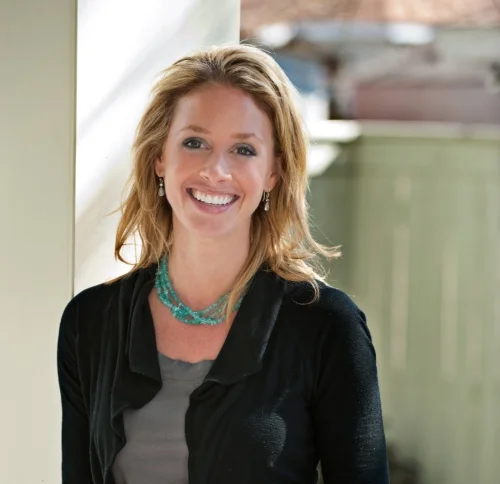New Orleans nutrition with Molly Kimball (part 1)
/Now more than ever, you are what you eat. Food used to be a simple matter of sustenance. Now it's part of your identity. Are you eating local? Gluten-free? Paleo? Are you a vegetarian? A flexitarian? And nowhere is food more intertwined with cultural identity than in New Orleans. City o' seafood & spice – and sugar, if pralines and king cake are any indication. New Orleans cooking is about tradition, flavor & fun. And in a city whose one-word food motto might be "indulge," I began thinking about how nutrition specialists fare in such an environment.
To find out, I interviewed Molly Kimball, a nutrition expert in New Orleans. She specializes in "lifestyle nutrition," a realistic approach to eating better. Her goal isn't to have you eating a perfect diet, it's to have you eating better than you were. And to stay on that path making incremental changes. Think tortoise, not hare (and remember who wins that fabled race). Molly has keen insight, an admirable work ethic, and great enthusiasm for what she does. As it turns out, her motto is to indulge as well – in an educated way. Below is part 1 of my interview with her.
You work as a dietician and nutrition consultant in New Orleans, a city strongly associated with food — and not exactly the healthiest food. What is it like promoting health and nutrition in that environment?
I started as a dietician in 1999, and I think the landscape has drastically changed in the past 15 years. When I first started, people didn’t even really understand what I did. Especially back then, so many dietitians were just hospital-based clinical dietitians or food service dietitians; it wasn’t something where healthy people went. Now I kind of jokingly say that we’ll always have a job here in New Orleans, because people really need the help. People are embracing it, and people are really wanting to improve their health.
That said, here in New Orleans when we’re working with someone, one of the things we’ll do is put together a plan with their input that factors in their favorite restaurant, their alcohol, their coffee, because they’re not going to give those things up here. What we put together might not be perfect and ideal, but they’re compromises that are best going to suit their lifestyle.
Are there any special challenges you face in that sort of “Eat, drink and be merry” culture?
Probably one of the biggest challenges is alcohol. People drink in New Orleans a lot more than in other cities; it’s a huge part of the culture here. Also, there are tradition-type things you don’t think about. People get a giant daiquiri when they’re going to the football game, or they get a giant daiquiri when they’re going out for Mardi Gras, which is weeks long. Or they do fried chicken strips when they go to the parade. These are traditions beyond things like jambalaya and red beans & rice.
Another thing is that the city has a program called Fit NOLA with the goal of making New Orleans one of the top 10 healthiest cities by 2018. They have a blueprint of how to make New Orleans healthier, including better parks and recreation, bike paths, walking paths and jogging paths throughout the city. Right now it’s not very walker-friendly. For me to go across the street, I’m going to drive, otherwise I’m playing Frogger with my life. So that’s a challenge, too. Most of the things that people are going to do require driving instead of walking.
How did you become interested in nutrition?
My dad was always very active, ate healthy and prepared healthy meals when I was a kid, and I think it was something I was always interested in as a hobby. I actually didn’t even know it could be a profession until I was in college. When I was in my sophomore year, I said, “Wait a second, this can be a job?” and was very interested in it. It was just an easy fit for me, so I immediately changed my major and went down this road.
You have a show called “Get the Skinny,” which airs in New Orleans. Your premise is that it’s not just what you eat, it’s how you eat. Can you elaborate on that?
We’re not just looking at the types of foods, but also the timing.So it’s not just lean protein and veggies and stuff like that, but also the timing of it. It’s the timing of when you have those carbs, it’s the timing in and around your workouts. If your goal is to drop body fat and you’re going to do a 45-minute spin class, you don’t really need to fuel up for that spin class because your body already has more than enough stored carbs for you to have an effective workout.
Also, mindset matters. Taking the guilt out of it. Taking the “I’m being bad” out of it. Trying to do your best most of the time, but when you choose to splurge you choose to splurge — and you do it wisely and don’t feel guilty about it. One of the things I’ll work with people on is negotiating. If you’re at dinner and you roll around in the bread basket, don’t make an excuse for it. Instead, when you’re ordering your meal, order your lean protein, your veggie, and ask them not to bring the starch, but to bring extra vegetables — because your choice was to have that bread. Become educated enough to know that if you want that second cocktail, then skip the starch and skip the bread with your dinner. Become educated enough to know how to do that, and then don’t beat yourself up about the splurge that you decided to have.
You’re also a nutrition columnist for The Times-Picayune newspaper, covering nutrition and fitness trends. Can you tell us what you think about some current trends — like gluten-free eating — and whether you think they’ll stick around or fade away?
Something like gluten-free, I’ll say five years ago I thought it was going to fade away. However, I think we’re seeing more and more that maybe only 1% of the population has Celiac or true gluten intolerance, but a good 10-15% — if not more — are gluten-sensitive, so I do think the gluten-free thing is here to stay
I hope that the products improve; there are a lot of gluten-free substitutes. You know, gluten-free pizza crust or crackers or breads or wraps, which are really just terrible white carbs — they’re just potato starch and tapioca starch and white rice flour. There’s really nothing in there that’s good for us, so just because they’re gluten-free doesn’t mean they’re good. We’re starting to see more good versions of gluten-free products coming out — you know, crackers that are made with quinoa and flaxseed, and actually good grains that are gluten-free. That would be my warning for people: Watch out, because a lot of times those gluten-free grains can be worse than the regular whole-wheat thing.
Realize, too, that there are a ton of options out there that are naturally gluten free, like sweet potatoes and beans. There are so many other ways we can get whole grain carbs without having to get gluten-free specialty products.
Stay tuned for part 2, which covers how Hurricane Katrina affected Molly's career path, her thoughts on food guilt & obsessing, how to eat healthy in New Orleans, and last – but not least – king cake.

